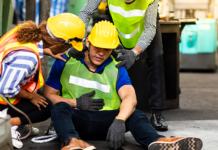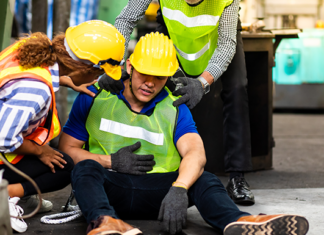Providing personal protective equipment to employees exposed to chemicals is more than just handing out safety glasses. Your employees are not protected unless you are providing them with the proper personal protective equipment. Recently, we were talking to a customer about chemicals in the workplace and he was not concerned about chemical exposure because he believed that his employees did not deal with “hazardous” chemicals. Most companies (even companies in the service industries like hotels, restaurants, and nursing homes) have a chemical exposure that needs to be evaluated.
Some thoughts to consider concerning personal protective equipment:
- Do your employees need goggles? Safety glasses may not provide enough protection. Goggles provide better protection from splashes than glasses because they have protection on all sides including the top and the bottom.
- Do your employees need a face shield? If you read your SDS, you may find that contact can result in chemical burns and not just eye irritation. Adding a face shield will protect skin from accidental splashing.
- Is there a potential to spill a chemical on your feet, legs, or arms while using it? If a bottle spills, will their current work shoes, shirt sleeves, or pants protect them?
- Feet: Do you allow open toe, athletic shoes with mesh material, or canvas shoes around chemicals? Chemicals can absorb quickly through canvas and mesh.
- Arms: Are long sleeves required? Will normal cotton fabric provide enough protection or are protective jackets needed?
- Legs: Are employees wearing shorts when transferring or using chemicals? Have you identified the PPE required in the SDS? In extreme cases, protective coveralls may be necessary.
- Are you buying the right gloves? In many workplaces, gloves are readily available but there are many different options. The SDS for a chemical can tell you which kind is best. You need to make sure employees know which gloves to wear. Using the wrong kind could be worse than using nothing at all.
- Who is wearing a respirator or a dust mask at your company? The use of respirators and dust masks must be controlled. If there is a reason to have a respirator, then proper selection and fit must be considered. If there is no reason to have a respirator yet you allow them to be used, you are opening yourself to the respiratory protection standard for no reason. Even the voluntary use of a dust mask by an employee requires OSHA documentation. Wearing any type of mask or respirator can affect breathing.
We can’t tell you what kind of PPE is suited for your chemicals, but your SDS’s can. Review them! Your safety equipment supplier is also a great resource – they often receive special training from manufacturers on new products.
Don’t get caught off guard if OSHA walks through your door; make sure your protection is adequate.

















